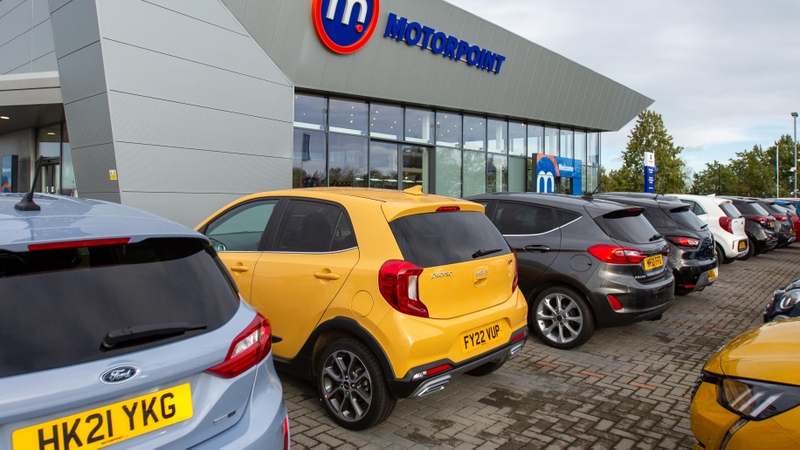
Dacia Sandero interior, tech and practicality
Gallery
Comfort and visibility
The Dacia Sandero sticks with tried-and-tested switchgear for the important controls. That might be a way to save costs, but it also means everything is brilliantly easy to use while you’re driving. These button things might just catch on.
As with many contemporary Renault models, the Sandero gets a chunky stalk for audio controls, rather than the buttons being integrated into the steering wheel. This takes a little bit of getting used to, and you might find yourself fumbling for the right area while you’re driving.
The Sandero is never going to win any medals for material quality – there’s no attempt to hide the swathes of cheap plastic, although higher-spec models get some nice fabric trimmings to lift the ambience. Still, we fully expect the Sandero’s interior to be durable – it feels solidly built – and the wipe-down surfaces make for easy cleaning.
You’ll find a couple of nostalgic throwbacks in the Sandero’s cabin. On half the trim levels, the door mirrors are adjusted by a funny stalk – no buttons to do that here. Back-seat passengers also have to wind down a lever to open the windows. We wonder if these are actually cheaper to integrate than widely available buttons, or whether Dacia has done this to make the Sandero feel deliberately utilitarian.
Besides some thick front pillars, the Sandero offers decent enough all-round visibility, which should make it easy to park even if you pick a model without rear sensors.
Standard equipment
The utterly basic Access trim has now been phased out (that’s partly why the Sandero has a more expensive starting price), with Essential trim now leading the line. It still feels like a cheap car if you like that sort of thing, but has body-coloured bumpers and hubcaps to make it look a bit more normal for a small car.

Essential boasts automatic LED headlights, which are much brighter and more energy-efficient than traditional halogen bulbs, plus auto wipers, cruise control, air conditioning and remote central locking. There’s a fair bit of modern safety kit, including automatic emergency braking, lane-keep assist, hill-hold assist and traffic sign recognition.
Mid-range Expression takes over from the older Comfort trim, and includes all-round electric windows, a ceiling light, keyless entry, rear parking sensors, a reversing camera, front fog lights and a steering wheel that adjusts for height and reach. This is the spec we’d recommend if you want to keep your spending in check but can’t live without some creature comforts.
Top-spec Journey offers alloy wheels, front parking sensors, an electronic handbrake and automatic air conditioning. This was preceded by the Prestige version.
Infotainment and audio
Three trim levels, three different infotainment setups. Well, if you use your phone as a touchscreen. Makes sense, really, because your phone is probably more powerful and easier to use than many carmakers’ best efforts.
Essential trim makes do with a phone holder hidden behind the Media Control cubby. Either use it as a standalone thing and have your maps app in a convenient place on the dashboard, or plug your phone into the USB next to the holder to make it a bit more integrated with the car. With a USB cable connected, the steering wheel controls and audio buttons magically start to work, and you can download the Dacia Media Control app from your app store, which creates a version of a touchscreen’s home screen. There are tiles for navigation, radio and media, and more.
It’s a decent solution, but the phone connection in our test car could be sporadic and, at one point, it started skipping through the entire music library of the phone at lightning speed without any warning. With smartphones able to do over-the-air updates without you even noticing, hopefully this would be an easy fix in an update patch.

The Media Display and Media Nav screens – on mid-range and high-end trims respectively – are the same eight-inch display, but the latter has extra functionality including built-in sat nav. Both have Apple CarPlay and Android Auto so you can use your phone’s apps for navigation and media playback, if you like.
Dacia’s touchscreen is one of the best around, simply because it’s well laid out and so simple to use. It’s not overloaded with features and animations you won’t appreciate – it just has all the essentials there in front of you. And it’s pretty quick to respond, too.
Rear seat space

The Sandero doesn’t embarrass itself for rear-seat space. It’s not class-leading but there’s plenty of space for four adults, and five can squeeze in for short journeys. There’s enough headroom unless you’re exceptionally tall, and it’s the same story for legroom.
Every Sandero gets a pair of legally mandated Isofix points, so you could use the Dacia as a family car if you want something cheap and don’t carry a vast amount of stuff with you.
The nice trimmings from the front don’t extend to the rear – the door cards are huge panels of scratchy dark plastic. You’re lucky if you get a map pocket, and a rear USB is only fitted on the top trim level.
Boot space

The diminutive Dacia offers a 328-litre boot, which is a bit bigger than the likes of the Ford Fiesta and Suzuki Swift. It’s in the mid-range of the supermini pack and is more than enough for a weekly shop or a couple of suitcases. There are a couple of hooks, which could come in handy, and the top-spec model offers a variable boot floor that lets you create a flat floor when the rear seats are folded. A 60:40 split-folding seat bench is standard.
The boot opening is large and the boot itself is a mostly useful shape, but the exposed metal tailgate makes it clear that the Sandero doesn’t have quite as much sound deadening as more expensive rivals.


















































